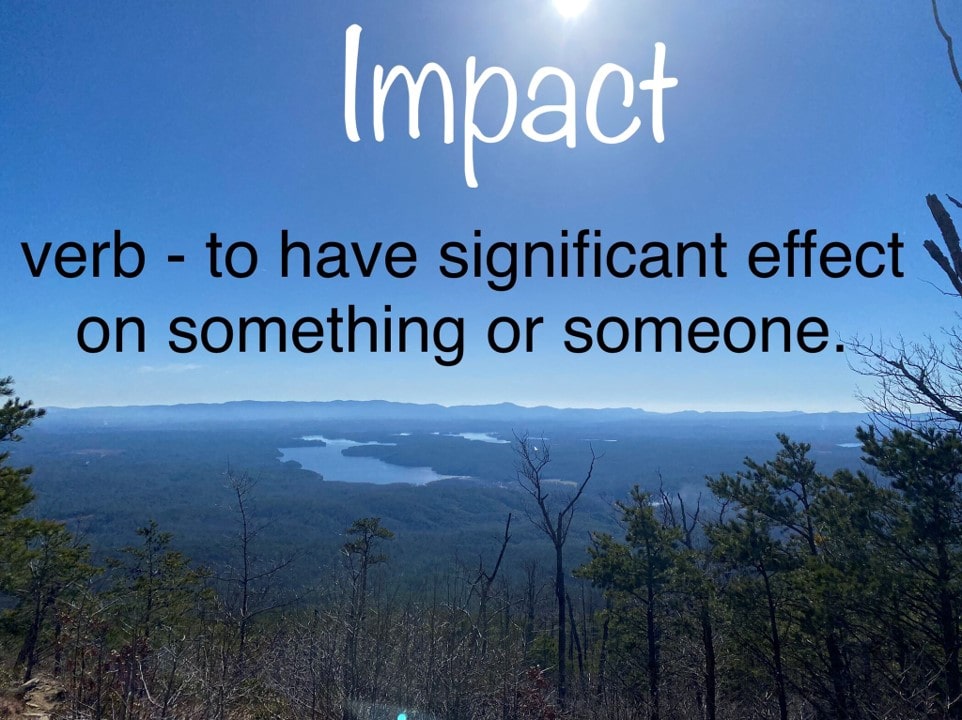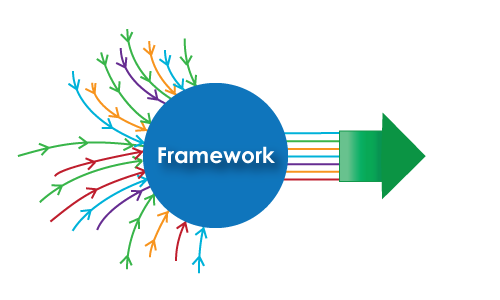High Yield Instructional Strategies 101
Increase your overall impact through the use of High Yield Instructional Strategies.
Exemplary Schools Focus on High Yield Instructional Strategies
There are hundreds of teaching strategies and practices every educator should know, and more are added with every new book, article, or school professional development. With so many pieces to the “education puzzle,” it is easy to get overwhelmed. In fact, a Google search of “teaching strategies” produces over 23,000,000 results. That is a lot of options; especially if you are unsure as to which ones will work the best for your students.
Add to this the challenge of educators collaborating to develop a shared understanding of which strategies really do have the most impact, and how to best implement them, and options keep growing. One of the most effective ways to help them prioritize their efforts is to focus on High Yield Instructional Strategies.
What is a High Yield Instructional Strategy?
In 2006, the US DOE determined that specific instructional strategies enabled schools to significantly impact student achievement in a short time when implemented with quality and support. These strategies were identified as High Yield or High Impact Strategies.
Since the initial identification of these strategies, there have been frequent literature reviews and meta-analyses of these strategies, as well as various studies that have looked for evidence-based practices that are common among those schools that overcome educational barriers. Researchers have typically identified the strategies by their effect size, using a process referred to as which is determined through meta-analysis, or the combining of multiple research studies into one category in order to provide an average effect size. Effect size is frequently used to report the contribution or evidence of an education intervention towards students learning.

Instructional Improvement: High Yield Instructional Strategies Continuum
It is important to acknowledge that there is a developmental continuum from the knowledge of the strategies to their implementation that reaches the most significant impact identified by the effect size. For example, Summarizing, a High Yield Instructional Strategy, has an effect size of 1.0, well above the 0.4 “hinge point” that has been identified as the marker for effective educational practice. In an attempt to make summarizing more systematic and take advantage of this strategy, schools and teachers have relied heavily on the use of exit tickets, often to the detriment of only summarizing at the activity’s conclusion. By waiting until the end for students to summarize, the effect size of the strategy is reduced to 0.29. It is the misapplication of the strategy’s use that negates its impact on student learning.
As teachers progress along this continuum, their implementation of the strategies will not look the same. This will require for leaders to develop and communicate clear expectations, and for teachers to reflect and refine their practice.
Learning-Focused is a collaborative way of planning to ensure that the most effective instructional strategies are employed strategically during a lesson so that all students can achieve the learning. It ensures that higher order thinking progresses throughout the lesson and that teachers consider the needs of all students. It makes a huge difference in lesson planning because it also forces teachers to focus on the knows and dos of the standards. It is essential for moving students!
- School Administrator, FL
How Do You Implement High Yield Instructional Strategies?
Before you implement a strategy, you must first understand why it is important. This is a key ingredient when building buy-in for the strategy. Only by knowing why the strategy is beneficial can teachers really understand how to best use it. Adding examples of what this looks like in instruction can provide clear expectations on how it should be used or even adapted to best meet the needs of students.
Example High Yield Strategy: Distributed Summarizing
Why should Distributed Summarizing activities be used throughout Lesson Instruction?
Distributed Summarizing moves students beyond recall by asking them to represent knowledge and skills in their own words at several points during a lesson. Research has shown that, for students, summarizing increases comprehension and long-term retention of information.
Distributed Summarizing helps you determine which students know the information before you continue on with instruction. When students summarize, their confusions, misconceptions, or misunderstandings surface, and these can be addressed accordingly. It actively requires students to categorize details, eliminate insignificant information, generalize information, and use clear, concise language to communicate the essence of the information.
Distributed Summarizing across a lesson helps address two important factors in why students struggle to process and retain new learning: limited working memory and short attention spans. John Medina explains that the human brain can only hold about seven pieces of information for less than 30 seconds (e.g. a 7-digit phone number).
If you want to extend the 30 seconds to a few minutes or even an hour or two, students must consistently be re-exposed to the information. Repeating to remember not only helps solidify new learning, but also helps in resetting students’ attention spans, which is approximately their chronological age + 1-2 minutes.
How do you implement this strategy to achieve the greatest impact?
-
The lesson plan consistently and intentionally details when, where, and how Distributed Summarizing will be used throughout the lesson.
-
Distributed Summarizing tasks are purposefully selected to align with Learning Goals and Levels of Learning.
-
Consistently provide multiple opportunities during the lesson for students to respond to questions and prompts for Distributed Summarizing and Distributed Practice prior to independent work.
-
Carefully monitor students’ thinking/conversations/writing and use their responses to inform instruction.
What does this strategy look like in both my in-person classroom and when used with online learning?
Example 1: Collaborative Pairs/Numbered Heads
Description: Students are paired during Lesson Instruction in order to think together about the information they are learning. Frequent opportunities to process information with a partner throughout the lesson utilizes the second most effective research-based instructional strategy, Distributed Summarizing. Both students are actively engaged since it is very difficult for an individual to get lost in a pair. You can quickly monitor pairs and make reasonable determinations regarding which students understand, which students need additional support, and those who are not comprehending.
Process:
- Creatively assign each student as a #1 or #2 partner. In addition to numbers, feel free to use 2 different colors, 2 different shapes, etc…
- Students should be in pairs. If needed, there can be one group of 3.
- Announce the task and the time limit.
- Partner #1 does_____________________.
- Partner #2 does_______________________.
- Activities are distributed throughout the lesson to:
- Summarize
- Clarify or explain
- Predict
- Generate a question
Digital Adaptation: Pair students using Google Meet or Zoom. Both allow you to create breakout rooms that let students collaborate with each other virtually. Use its 60-second countdown to bring students back to the main meeting whenever you are ready.
Example 2: Effective Questioning
Description: Questioning is one of the most frequently used classroom instructional strategies. One study proposed that teachers ask an average of 300 to 400 questions each day and for a variety of purposes - to engage students, focus learning, help students connect to their background knowledge, collect evidence of learning, spark conversations, enhance listening skills, increase the depth of learning, and often just to see who is paying attention. It also lets us check students’ understanding at key points during the lesson, and then make adjustments as needed and to promote thinking. This is why effective questioning requires purposeful planning of not only when to ask a question, but that the expected student response will provide evidence of the targeted Learning Goal. For example, recall questions neither give evidence of understanding nor do they promote thinking. They simply show that students have memorized surface-level information. A math example would be, “Explain your strategy for solving the problem? How else could you solve the problem?”; while for English Language Arts, “Which of the details from the text best helps the reader understand the meaning of______?” Both of the examples elicit evidence of the students’ ability to justify answers with evidence.
Process:
- Plan questions for each part of Lesson Instruction based on either the Levels of Learning or Comprehension Strategy of each Learning Goal.
- Write the questions in the lesson plan at the point where they will be asked.
- Plan response strategies for each question to ensure that all students are engaged and responding to the questions.
- Use wait time and follow-up strategies to support quality answers.
- Provide opportunities for students to develop and use their own questions.
Digital Adaptation: While online tools like Kahoot or Nearpod are trendy ways of questioning students as part of class discussion, it is important to consider choices that give you flexibility in how you pose questions and also gather students’ responses. For example, quick polls can give you a snapshot of Level 1: Recall thinking, while other tools like open responses allow for explanation or justification of thinking. These are needed for Level 2: Represent and Level 3: Analyze and Reasoning questions.
The Multiplier Effect
The random use of one or two High Yield Instructional Strategies will not work. High achieving schools use a systematic process within their instructional framework to create significant learning gains for every student. When a lesson connects multiple High Yield Instructional Strategies, the effect on learning builds.
Learning-Focused is an instructional planning framework that incorporates research-based strategies, higher-order thinking, backward design, and differentiation. It represents and makes concrete a way of thinking about how to plan. In my opinion, it is a very effective way to plan and I recommend the Learning-Focused framework.
- School Administrator, GA

Exemplary Schools Use an Instructional Framework
When using the High Yield Instructional Strategies, an instructional framework can guide educators in gaining the strongest impact on learning outcomes for their students, as well as maintaining a consistent and pervasive focus on the use of the strategies and how they connect with one another to form an Exemplary Practice. This focus is fundamental in addressing the various learning needs of students, as well as in reducing student learning loss and closing achievement gaps over time.
"Learning-Focused is an instructional framework that facilitates collaborative planning to produce purposeful lessons that guide students in acquiring, understanding, and retaining information."
- School Administrator, VA

Ready to Make Instructional Improvement Gains?
Contact us to discuss how Learning-Focused can help you close your school or district’s achievement gaps. Set an appointment to discuss your school or district’s goals, previous implementation, and how Learning-Focused as an education partner can assist you with achieving them.
